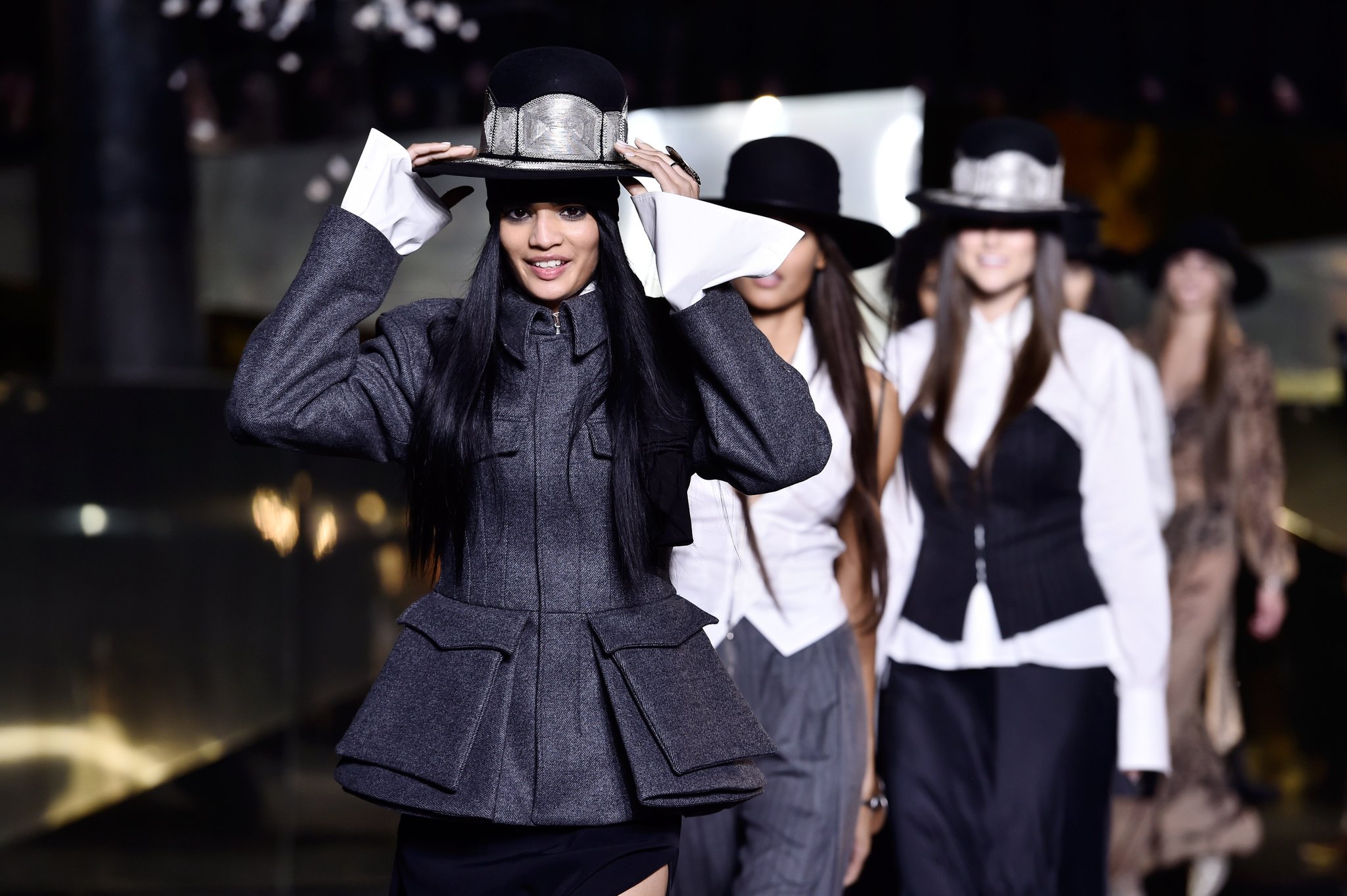
bonyadi magazine
In past seasons, New York Fashion Week has been a grander-than-grand spectacle that brought eccentrics out from the woodwork. But for Fall 2017, there seemed to be a change in the air. The vibe was much less raucous, and decidedly more cerebral
Perhaps the fashion industry has found a way to control the onslaught of bloggers, influencers, fashion celebrities and the like—or, at least, figured out who really carries weight, and narrowed down the invite list to the essentialists. And though a degree of fanfare did exist (fashion shows have basically become marketing ploys, after all), the crowds were less boisterous, the foot traffic was not as hectic, and the egos seemed to be tapered (for the most part). All of this made the hullabaloo surrounding the event less prevalent, and put the focus on what really matters: the clothes, the presentation, and the ideas behind them
Indeed, fashion serves more then its elemental purpose of covering the body: it also reflects the social climate of a given time period. And it would appear that many designers in New York have zoned in on the latter, presenting collections that commented on politics, gender and race in a prominent way. Like a painter with a brush or a musician with an instrument, the sartorial set utilized the medium of a fashion show to express their viewpoints on the zeitgeist, which largely centered on Donald Trump’s presidency and the policies he has enacted since becoming commander in chief.
From the president’s opposition to Planned Parenthood to the ban on refugees to the lack of diversity in his cabinet picks, there was a collective outcry that opposed Trump’s agenda at New York Fashion Week
To begin, the Council of Fashion Designers of America (CFDA) created pink buttons that said “Fashion Stands With Planned Parenthood,” which were distributed at a number of shows, and eventually made its way onto a look on the runway at Tome. Then there were designers who made overt statements with protest shirts: Alice + Olivia had a printed T that said “Be The Change You Wish To See In The World,” Creatures of the Wind’s said “We Are All Human Beings,” Pyer Moss’s said “Nothing To Say,” and Prabal Gurung had a number of declarations, including “We Will Not Be Silenced.” The most notable slogan came from Dao-Yi Chow and Maxwell Osborne of Public School, who had red caps that read “Make America New York,” a riff off the one that Trump wore on his campaign trail
Less conspicuous were the onslaught of pantsuits that dominated the runways of Ryan Roche, Tibi, Jason Wu, Gabriela Hearst, 3.1 Phillip Lim, Oscar de la Renta and more. Could this have been a subtle reference to Hilary Clinton’s infamous uniform and the prolific Facebook group Pantsuit Nation, which supported her presidential run? That is up to interpretation. But seeing how most of the fashion community supported Clinton on the campaign trail, her influence may have sparked the trend. It also shows—hopefully once and for all—that wearing a blazer and trousers isn’t just a passing fad that many relegate as being borrowed from the boys. The style is an effective way of exuding power in a professional setting, and shouldn’t be specified to just one gender
Lastly, and most notably, were the models of different races, sizes and creeds that graced the catwalks. Diversity has always been an issue in fashion, where a white, waifish look was often regurgitated season after season. Sticking to an unattainable appearance was the prescribed norm for brands. But in the effort to promote how “We Are All Human Beings,” New York Fashion Week for Fall 2017 was a virtual melting pot
Mara Hoffman, in particular, had a stellar presentation that cast the some of the Women’s March on Washington co-chairs. Using strong, resolute women (along with a sprinkling of models and dancers) amplified her incredible collection of unfussy yet playful dresses and refined separates that were all made of organic materials. Hers may have been the most glaring demonstration, but she was certainly not riding the diversity train alone. In fact, the majority of designers made it a point to promote the idea of inclusion. Other standouts include Prabal Gurung, J. Crew (who, like Hoffman, cast real people), Tome, Christian Siriano, Chromat and Michael Kors, who had the curvaceous supermodel Ashley Graham strut alongside the ubiquitous cadre
In fashion, trends come and go. But here’s hoping that New York fashion designers do more on the front line to make diversity the standard, and not just a novelty act










